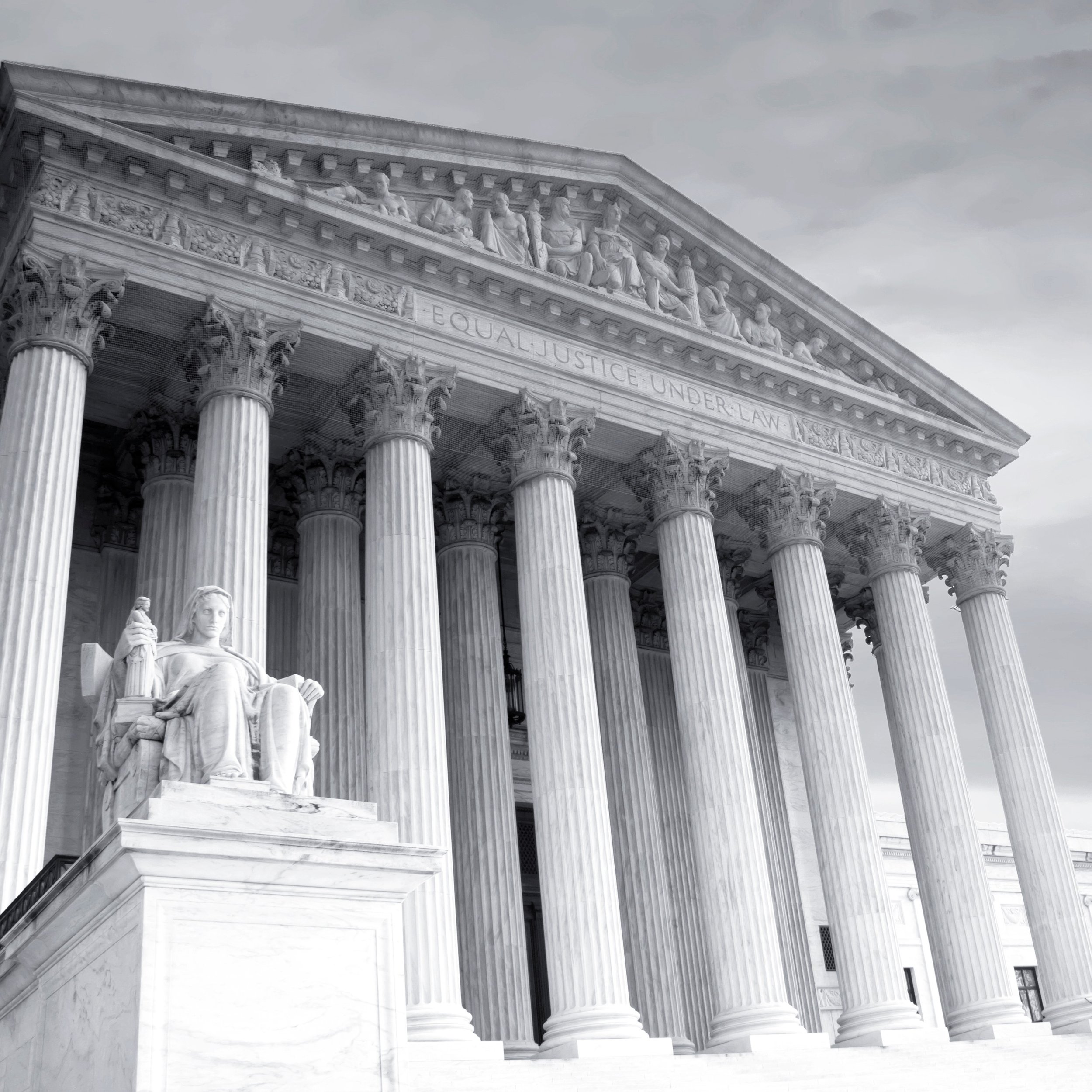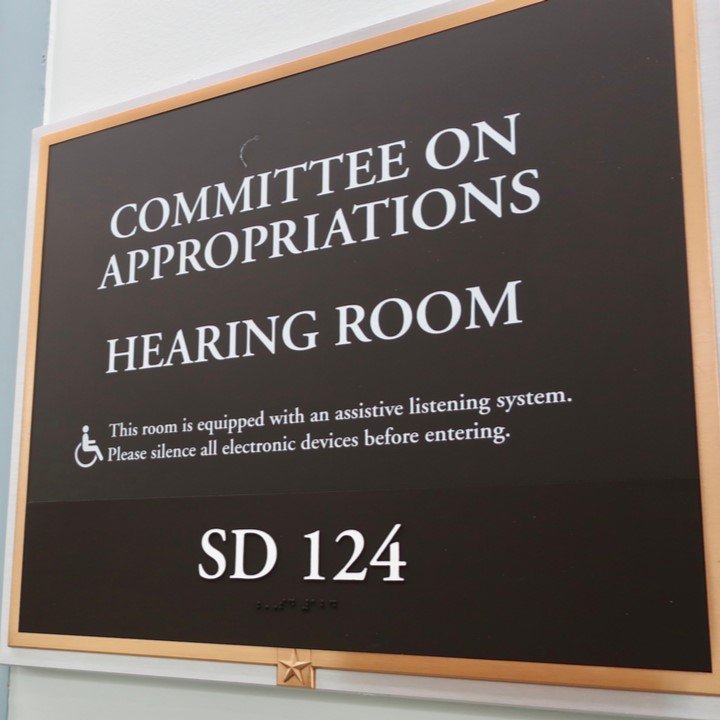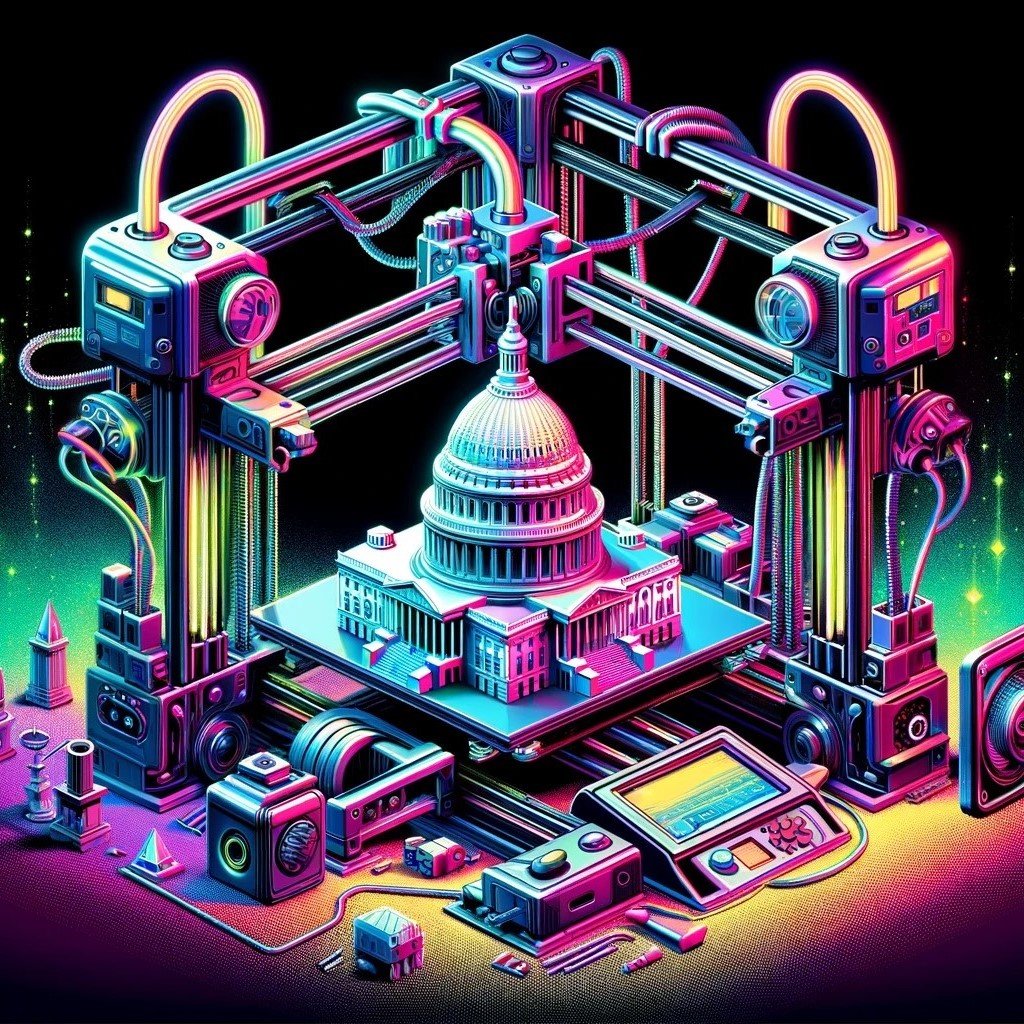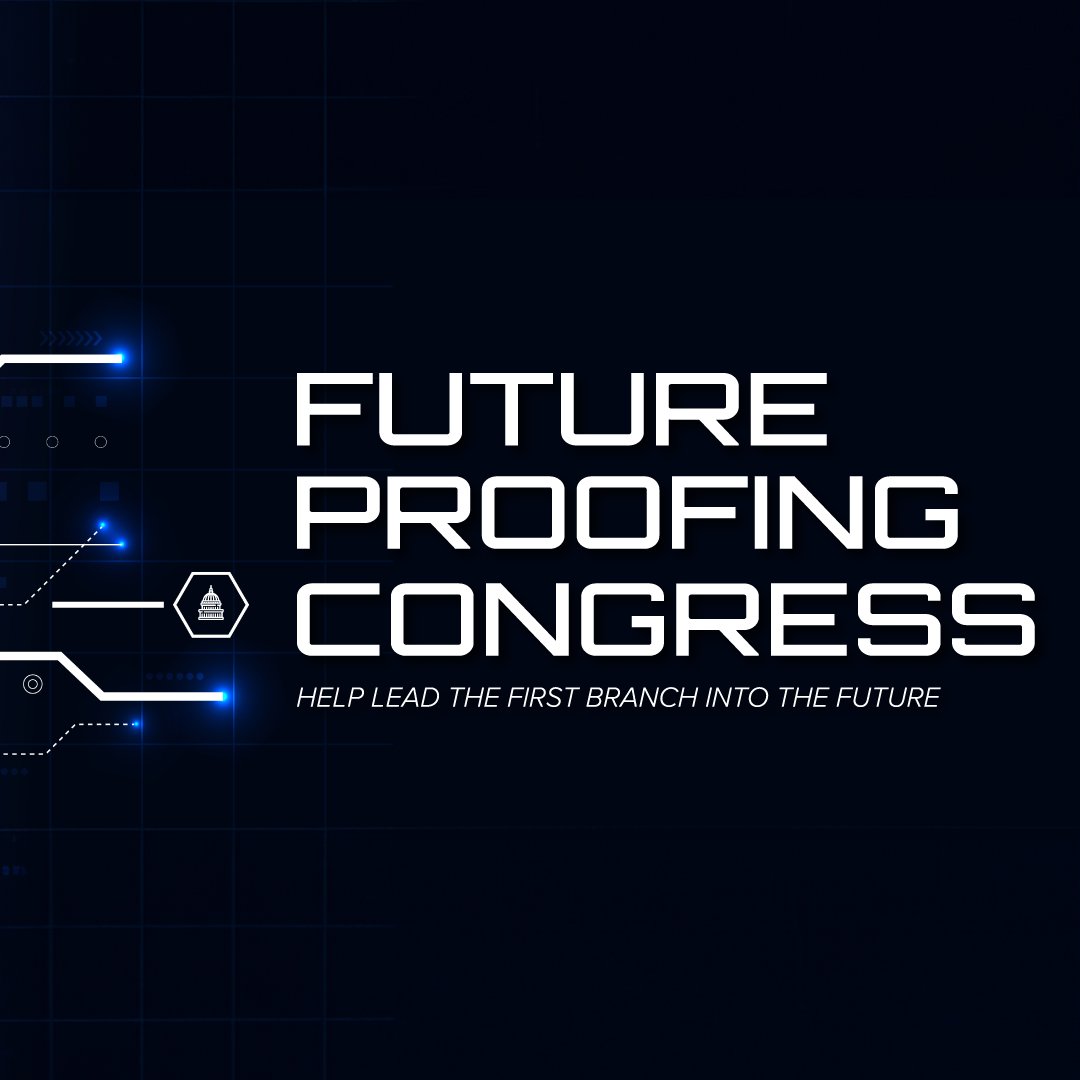
Future-Proofing Congress
How Member-Led Upgrades Are Optimizing Legislative Branch Capacity and Resilience
Introduction
Executive Summary
The Moment
The Pacing Problem
Member-driven Accomplishments
The House of Representatives is in the midst of a modernization golden age that began in 2019. In a great demonstration of bipartisan comity and institutional foresight, Members, Congressional staff, and Legislative branch agencies have implemented many meaningful upgrades to outdated processes — streamlining capabilities and boosting the chamber’s effectiveness to adapt Congress to the 21st century and better meet the needs of its constituents.
Becoming a “modern” institution is not a finite goal, but a perpetual practice of embracing ongoing improvement. To keep pace with the innovation happening beyond the walls of the Capitol, the House requires continuous investment and leadership by Members to promote the advancement of the institution. Progress is happening, however, as the Chamber adapts to meet the challenges of the 2020s, including a global pandemic that spurred technological and operational reforms. Building on this momentum, new Members can play a role in bringing new ideas and championing solutions to further improve how Congress works in service to constituents and the longevity of the institution.
Further, recent Supreme Court decisions such as Loper Bright (overturning the Chevron doctrine) and Corner Post (eliminating a six-year limit on challenges to federal rules) emphasize the need for increased Congressional capacity.
What’s in the name “future-proofing?”
The concept of “future-proofing” acknowledges that institutional modernization is not a destination to be reached but an agile process of continuous improvement that embraces an approach of monitoring changing conditions, testing new approaches, and sharing lessons learned.
The Work Continues
Glossary
Additional Resources
Join the Movement
Executive Summary
The beginning of each new Congress brings a literal and metaphorical refresh for the House of Representatives, providing individual Members with an opportunity to influence the chamber’s rules and operations. Since 2019, Representatives from across the ideological spectrum have found common cause in driving institutional changes to modernize the day-to-day operations of the House, boost Congressional capacity, improve the constituent experience, update staff recruitment and retention, and increase legislative transparency. Many of these bipartisan improvements have materialized without the need for legislative action, highlighting the wide-ranging authority Members have to shape the institution. Thanks to the Members who have championed these initiatives, today’s House is more modern and effective in the following ways:
-
More modern tools to boost efficiency, effectiveness, and oversight.
The creation of the House Digital Service.
The House is a global leader in its agile, institutional approach to the emergence of GenAI.
Staff have better access to nonpartisan, fact-based science and technology expertise.
The House Clerk developed and launched the Comparative Print Suite project to enhance transparency of how proposed bills would alter the US Code.
A dedicated Legislative branch working group is focused on improving transparency and accessibility of legislative data.
The House provides a forum for new, innovative ideas via the Congressional Hackathon.
Members’ district offices now have minimum standards
-
The House now has a human resources department, professionalizing and standardizing workforce support and resources.
Congress is beginning to adopt best practices for onboarding and workforce training.
The House increased its investment in resources to attract and retain America’s best and brightest to its workforce.
Staff now have dedicated coworking spaces for collaboration.
The House has greater pay transparency.
The House has centralized a House Intern Resource Office (HIRO), providing structured professional development and mentorship opportunities for interns.
Staff and Member pay are no longer linked, opening the pathway to improve staff pay.
Congressional staff can now partake in professional certification programs.
The House has adopted private sector best practices related to Member lodging costs, combating limitations that a seat in Congress could only be maintained by the independently wealthy.
The House has invested in the capability for Member offices to adopt telework agreements and flexible work arrangements, boosting recruitment and retention.
Student loan repayment program recipients can receive benefits without salary-based limitations.
Members-elect now have access to better training before they are sworn into office.
Chiefs of Staff and District Directors have access to nonpartisan professional development and management training.
-
Members can secure funds for district-based projects.
Visiting the Capitol has become more inviting, improving constituents’ experiences.
Congressional staff and visitors have access to better campus services..
The Capitol complex is more accessible with ADA transit zones.
House websites are meeting accessibility standards for the first time.
Members of Congress can freely share urgent updates and resources with their constituents during emergencies.
Constituents now have multiple options for receiving updates from their Representative.
There is greater accountability for those who engage in threatening and abusive behavior toward Congressional offices.
Members of Congress can now cohost events with nongovernmental organizations in their district to provide constituents with resources and information.
For each of the above achievements, this report explores the issue addressed, how the change materialized, the impact it has had thus far, and next steps in need of a Member to champion.
At a time when polarization and factional in-fighting has mired its public reputation, the modernization achievements made by the House in recent years have resulted in impactful, positive progress. The work continues.
Through these initiatives, or by simply pursuing small improvements in how offices operate, all staff and Members can be part of this ongoing process that continues to breed success and have a lasting impact on our legislature.
Is your Member of Congress championing a reform proposal for how to improve Congress or do you have your own idea? We would love to hear about it!
Note: This report references a variety of acronyms that are defined in the glossary.
The Moment
-
Pressure to address deteriorating internal House systems and processes reached a boiling point in 2018 at the end of the 115th Congress. Incoming Members had been growing increasingly surprised and frustrated by how far behind the House’s internal operations and support technology were compared to what was available in the private sector. As Rep. Cathy McMorris Rodgers [R, WA] put it:
“What we’re seeing is a 19th-century institution often using 20th-century technology to respond to 21st-century problems. We need to change that.”
She was not the first to notice. In 2011, House Leadership, through the initiative of then House Majority Leader Eric Cantor [R, VA] and Democratic Whip Steny Hoyer [D, MD], hosted a one-day bipartisan “Hackathon" to bridge the innovation gap between Congress and technologists. This and subsequent events (in 2015, 2017, 2022, and 2023) created a sandbox where brainstormers from both sides of the aisle, inventors, technologists, and interested members of the public could explore creative solutions to some of the House’s greatest technological challenges. But this one afternoon of solutions-focused discussions was not enough to dam Members’ ever-growing frustrations with day-to-day inefficiencies.
In response to a proposal championed by multiple Members from both sides of the aisle, former Speaker Nancy Pelosi [D, CA] established a Select Committee on the Modernization of Congress (ModCom) at the start of the 116th Congress. This formal “select committee” status empowered a working-group of Members from numerous committees and seniority levels to sit around one dais and discuss House-focused operational details, challenges, and solutions. The twelve-seat bipartisan committee operated from 2019 to 2022, with two extensions (both of which were unprecedented for this type of temporary Congressional sub-organization). During that time, the committee formally recommended 202 improvements for the institution.
Why Modernization is Happening Now
Since 2019, Members of the House of Representatives have pursued initiatives on and off the floor, in the spotlight and on the fringes, that have resulted in real change to the institution without the need for a gavel or seniority. While slim majorities and emerging factions have scrambled expectations and challenged leadership, many Members have learned to harness their power to push for institutional upgrades that are resulting in a better functioning House.
-
ModCom was established in the 116th Congress as a twelve-seat bipartisan committee tasked with identifying and suggesting improvements to the operations of the House of Representatives. The Committee's aim was to make the House more efficient, transparent, and responsive to the needs of its Members and the public. During the 116th Congress, ModCom focused on several key areas, including:
improving constituent engagement,
enhancing technology and innovation, and
streamlining and reorganizing House operations.
Its 97 recommendations ranged from modernizing voting procedures to improving the public accessibility of Congressional data.
ModCom continued its work throughout the 117th Congress, building upon the foundations laid in the previous session but with new perspectives of a mostly new membership. The focus expanded to include issues such as:
staff diversity and retention,
modernizing Congressional procedures, and
enhancing security and wellness for Members and staff.
This resulted in an additional 105 recommendations.
The Committee proposed measures to:
enhance staff HR resources,
boost the House’s cybersecurity and digital infrastructure, and
modernize the legislative processes.
These were notable bipartisan accomplishments, particularly in the midst of the effects of the COVID-19 pandemic and in the wake of the events of January 6, 2021.
-
Over its four-year existence, ModCom approved 202 recommendations — in a bipartisan and often unanimous fashion — for how the House could improve its operations. ModCom served as a release valve for Members to share frustrations while simultaneously putting them in the driver’s seat to brainstorm and recommend ways to fix the problems they identified. Although ModCom did not hold legislative authority to independently implement recommendations it made, it played an unforeseeably effective and essential role in bridging or breaking through institutional silos by empowering Members to identify the root causes of dysfunction and propose specific solutions.
As a select committee with Member expertise that spanned multiple committees, ModCom became the overarching mechanism to focus the conversation and question the institutional status quo rather than take it for granted. The Members on the committee approached topics from a place of wanting to listen, learn, and understand rather than with an aim to dominate a conversation in order to drive a particular agenda. They heard from current and former Members, expert staff, civil society, academia, professional organizations, and more.
This approach fostered engagement that was both deep and wide, and an unprecedented bipartisan productivity level.
-
Following the issuance of the ModCom’s final report, Members, staff, and civil society groups saw a need for this work to continue. At the start of the 118th Congress, a new standing Subcommittee on Modernization (ModSub) within the CHA was created by then Speaker Kevin McCarthy [R, CA], institutionalizing an ongoing conversation.
The primary role of ModSub, led in the 118th Congress by Chairwoman Stephanie Bice [R, OK] and Ranking Member Derek Kilmer [D, WA], is to oversee and facilitate the implementation of the recommendations made by ModCom and continue identifying additional areas for institutional improvement. The ModSub also focuses on:
enhancing cybersecurity measures to protect the House’s digital assets,
exploring new ways to make the legislative process more transparent and accessible to the public, and
addressing staff development and welfare, a crucial aspect of maintaining a modern and effective legislative body.
ModSub’s creation was largely influenced by the preceding work and momentum achieved by ModCom, and was formed under the CHA to focus on implementing these suggested changes and to continue driving institutional improvements. This move underscored Members’ commitment to ensuring that the innovations and improvements proposed by ModCom in its 202 recommendations would be translated into action, and that an “owner” of continued institutional improvement would now exist within CHA.
-
The Modernization Initiatives Account (MIA) came into existence to provide financial support for implementing the institutional projects recommended by ModCom. The MIA began with an initial funding of $2 million in FY21, followed by an identical allocation in FY22. In FY23, this funding significantly increased to $10 million, all incorporated within the Legislative Branch Appropriations bill. FY24 retained the $10 million allocation.
From its inception, the MIA has been perceived by CHA as a vital resource for financing the implementation of the recommendations made by ModCom. Notably, many of the recommendations fall under the purview of that committee, highlighting the strategic role of the fund in driving forward modernization efforts within the House of Representatives. In the years since the MIA’s creation, the fund has been used to support implementation of a number of recommendations and continues to be a necessary resource to drive Member-identified improvements to the institution.
On a macro level, Members have pushed institutional offices to revisit common practices and explore innovation, driving these traditionally risk-averse teams to increase capacity in order to adapt and evolve in an increasingly digital and fast-paced world.
This ongoing work could not be more timely as Americans’ trust in the effectiveness of their legislative institution continues to be challenged, as does the institution’s ability to keep pace with the demands of the pending decade. Some of the “low hanging fruit” Members identified since 2019 as part of ModCom have been addressed, and it is off of that momentum that Members of the House must capitalize and continue to pursue improvements. If not, and the institution begins to become stagnant, it won’t just struggle to serve a rapidly changing nation: it will fall irreparably behind in both adapting to and legislating for the needs of a modern world.
The Pacing Problem
Modernization is Essential, Now More than Ever
As society and industries continue to evolve and adapt to new technologies, their functions, and their effects on constituent and customer expectations, government is at risk of falling irreparably behind the innovation curve. Known as the “pacing problem,” government institutions struggling to adapt to emerging technology don’t simply lag in use of the tools, they become unable to adequately understand, and therefore, regulate them. A timely example is Congress’ ongoing debate about how to regulate social media platforms. Yet, part of the success of the ModCom is the demonstration that every Member has the ability to fight this potential outcome.
The work undertaken so far has already had a lasting impact on improving the operations of the institution for all who work within it and are served by it, but it's only the start. Current and future Members and staff can continue to use a variety of tools and approaches to further modernize the House, and pursue similar changes throughout the Legislative branch.
When Congress works effectively, constituents are better able to engage with their elected officials, legislation better aligns with the nation’s needs, and legal clarity increases social and economic prosperity. That is why Legislative branch institutional modernization is not only timely, it is essential for all other efforts focused on improving government effectiveness or efficiency to succeed.
-
In fall 2022, OpenAI launched ChatGPT, the first commercially available GenAI-powered large language model (LLM). In the year that followed, a lively ecosystem of GenAI LLM competitors took shape and industries began to adapt, innovatively exploring how to harness this new technology. Recognizing the need for Congress to both monitor and prepare for GenAI’s continued evolution in both the private and public sphere, the CHA brought on a GAO STAA detailee to advise Members, staff, and institutional support offices of potential policies in need of creating or updating to keep pace with this emerging technology. With the expertise provided by the detailee, CHA has partnered with the House’s institutional offices to establish House-wide technology guidance and guardrails, create a working group, hold hearings, and conduct listening sessions to ensure the House does not fall irreparably behind the GenAI innovation curve. CHA’s continued progress is shared publicly through their publication of AI Flash Reports that can be found on the ModSub CHA committee website.
Member-driven Accomplishments and Further Improvements in Need of Championing
Technological Innovation
-
When it comes to performing its oversight functions and processing thousands of documents to fully understand complicated policies and their implications, Congress has been woefully behind in utilizing tools to receive, organize, review and store information. LEARN MORE
-
An internal innovation hub, the House Digital Service (HDS) is able to directly engage with Members and staff to create specific technology solutions to high-impact problems. LEARN MORE
-
The US House of Representatives has emerged as one of the world’s leading legislative bodies in responsibly responding and adapting to the emergence of GenAI. LEARN MORE
-
Congressional support agencies are better equipped to assist Congress with its science and technology-based policy needs. LEARN MORE
-
The House has launched a legislative drafting tool that allows Members and staff to see how new legislative language would change the law. LEARN MORE
-
A bicameral task force aimed at strengthening Congressional data transparency and accessibility has been given more scope and responsibility. LEARN MORE
-
The Congressional Hackathon provides a sandbox for Congress, the public, the private sector, and civil society to foster greater technological innovation. LEARN MORE
-
Districts offices are now equipped with better support services, including wi-fi enabled spaces. LEARN MORE
Capacity
-
The House has enhanced its internal operations to provide better payroll and benefit information and improved professional development training for its staff. LEARN MORE
-
The House has begun to standardize onboarding training to ensure Congressional staff are ready to hit the ground running. LEARN MORE
-
The House has raised funding for Congressional staff and intern salaries to better compete with the private sector and other branches of government. LEARN MORE
-
The House publishes salary ranges for Congressional staff positions to allow staff to better negotiate salaries. LEARN MORE
-
For the first time ever, the House has a central institutional office to help support Congressional interns and intern managers. LEARN MORE
-
Congressional staff now have spaces, located in the Cannon House Office building, specifically for collaboration. LEARN MORE
-
The House removed the staff pay cap to help address the workforce retention challenge. LEARN MORE
-
The House has expanded its professional development programs to provide Congressional staff the opportunity to expand expertise and management skills. LEARN MORE
-
The House has updated its Member lodging policy to help alleviate personal financial burdens after being elected to Congress. LEARN MORE
-
Congressional offices have the autonomy to provide flexible work arrangement policies, helping align more with the private sector. LEARN MORE
-
The House reformed its Student Loan Repayment Program to help improve staff recruitment and retention. LEARN MORE
-
Better training for new Members will help offices better serve constituents from day one. LEARN MORE
-
More management training opportunities for staff leadership positions will help offices run better, both in DC and in districts nationwide. LEARN MORE
Engagement
-
Congress initiated its Community Project Funding Program, a key Article I tool. LEARN MORE
-
A revised screening process for constituents to enter the Capitol helps heighten safety for all. LEARN MORE
-
More dining options available at night allows Congressional and support office staff to order on campus, thereby saving time. LEARN MORE
-
Providing proper ADA pick-up and drop-off zones helps ensure the Capitol campus is accessible to all. LEARN MORE
-
Accessibility updates to House websites, such as standardizing image captioning and website layout designs, enable all constituents to find information they need. LEARN MORE
-
Congressional offices can now share mass communications related to crises to constituents without the need for House commission approval. LEARN MORE
-
Members can now send communications by phone, email, or text to provide relevant community news, updates, and information. LEARN MORE
-
Capitol switchboard improvements enhanced the US Capitol Police's capabilities in identifying and investigating those who make threatening or harassing calls to Member offices. LEARN MORE
-
Revised House ethics guidance now enables Members’ district offices to partner with community organizations for events. LEARN MORE
We will continue to update this resource guide as additional accomplishments are achieved.
The Work Continues
The House is Changing, One Member-Driven Initiative at a Time.
From the introduction of new technologies that are customized to fit House staff workflows, to re-empowering Members to better represent their constituents from day one of taking office, Congressional modernization is improving the effectiveness of the institution one Member-driven change at a time. The nineteen Members who served on ModCom, their four successors on the CHA Subcommittee on Modernization, and countless other Members who have testified during Member Day Hearings, made their voices heard on the Appropriations Committees, or simply pushed beyond the status quo of their own operations, have championed the progress made by fostering conversations focused on getting to the root of institutional inefficiencies and then pursuing implementable, achievable solutions.
ModCom made 202 recommendations, of which more than 60 have been implemented and more are in progress due to the ongoing work of the CHA Subcommittee on Modernization. Additionally, the Modernization Caucus — a bipartisan coalition of Members similarly focused on identifying institutional improvements and recommending change — held its inaugural meeting in fall 2023. For staff, the Modernization Staff Association has created an avenue for individuals to get involved at all stages of their Congressional careers. Through these initiatives, or by simply pursuing small improvements in the operational workflow on a singular team, all staff and Members can be part of this ongoing process that continues to breed success and have a lasting impact on our legislature.
Members (and the staff who support them) can change the institution because you are the institution! To future-proof Congress for the years ahead, it needs you to be part of the conversation.
Glossary
ADA = Americans with Disabilities Act
AOC = Architect of the Capitol
CHA = Committee on House Administration
CAO = House Chief Administrative Officer
CDTF = Congressional Data Task Force
CR = Continuing Resolution
COLA = Cost-of-Living Adjustment
CPF = Community Project Funding
GAO = Government Accountability Office
GAO STAA = The Government Accountability Office’s Science, Technology Assessment, and Analytics team
GenAI = Generative Artificial Intelligence
HIRO = House Intern Resource Office
HDS = House Digital Service
LIS = Legislative Information Service
LLM = Large Language Model
MIA = Modernization Initiatives Account
ModCom = The House Select Committee on the Modernization of Congress
ModSub = Subcommittee on Modernization (ModSub) within the Committee on House Administration
MOU = Memorandum of Understanding
NMO = New Member Orientation
OCWR = Office of Congressional Workplace Rights
Additional Resources
Newsletter Archives





















